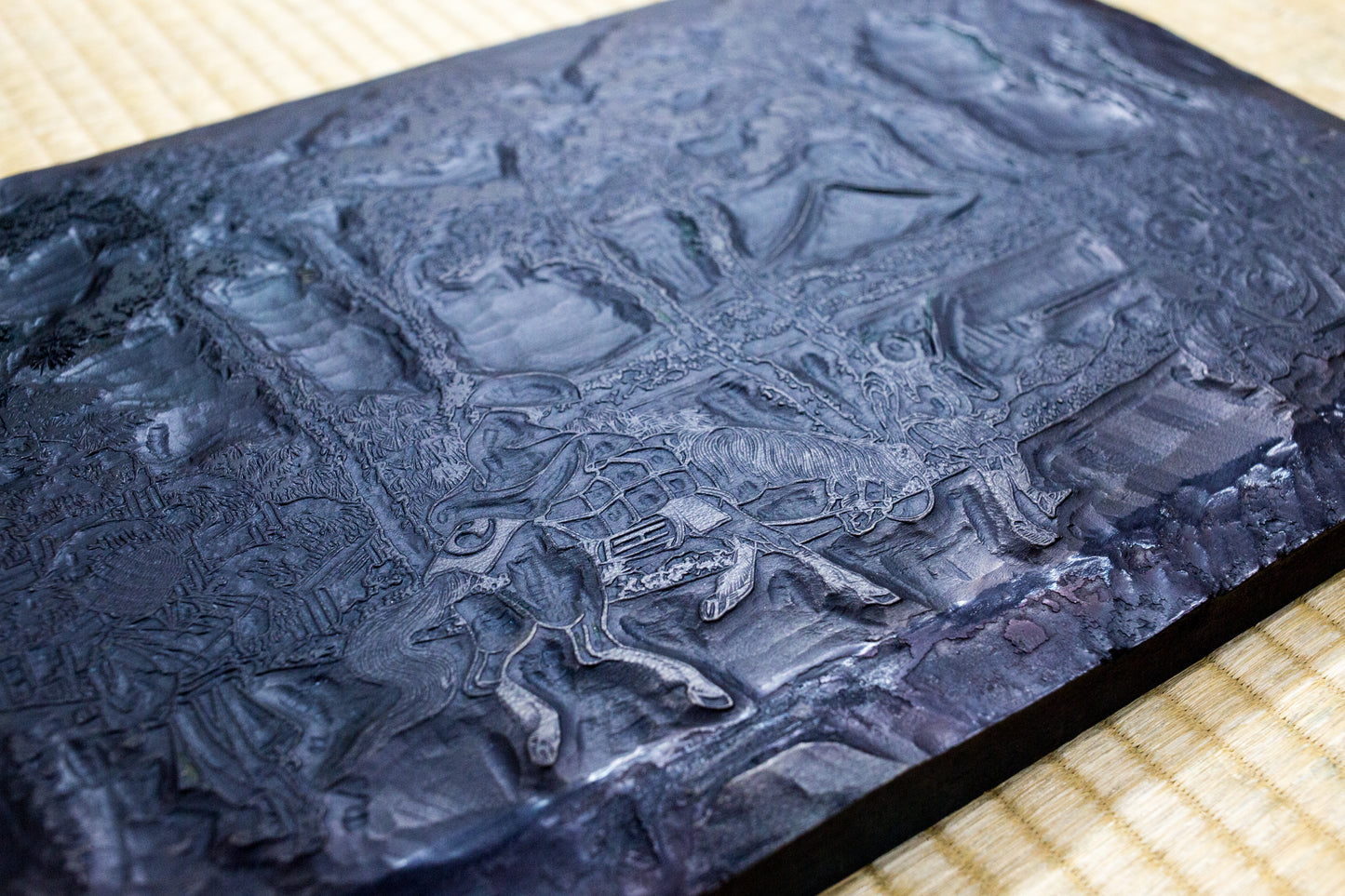Toto Asakusa Honganji-Temple
Toto Asakusa Honganji-Temple
Couldn't load pickup availability
Hokusai Katsushika(1760-1849)

1760(Houreki 10) – 1849 (Kaei 2)
When Hokusai was 19, he became an apprentice of Shunsho Katsukawa, who was the leading artist of portraits of kabuki actors. Hokusai made his debut the following year. After Shunsho’s death, Hokusai left the Katsukawa School and took on the name Sori Tawaraya. Tawaraya was the name of one of the groups of the Rinpa School in Kyoto. Hokusai began his career as a town painter. He worked as Sori for three years, and then started using the name of Hokusai when he was 38 years old. During his 40s, Hokusai became famous for the illustrations in books about his unique expression and style. In his 50s, the number of his apprentices increased and he established his school – the Katsushika school. He started producing the work that earned him a place in history, “Thirty-six views of Mt. Fuji”, when he was over 70 years old. He died at around 90, leaving the impressive words, “If I could have lived ten or even five more years, I would have become a real painter.”
Thirty-Six Views of Mt. Fuji
Hokusai Katsushika(1760-1849)
As the title tells, all of the paintings in this series depict Mt. Fuji. This work is not only recognized as Hokusai’s masterpiece, but also the greatest masterpiece of ukiyo-e depicting sceneries. At first, thirty-six drawings were published, and ten more were added afterwards due to their popularity, totaling forty-six. The original thirty-six are called “Omote Fuji (Front (of) Fuji)” and the addition is called “Ura Fuji (Back (of) Fuji)”. Religious practice existed among people, much like today. People enthusiastically climbed up Mt. Fuji in groups as a form of worship known as “Fuji ko”. In this social background, Hokusai drew “Thirty-Six Views of Mt. Fuji”, and it achieved great success.
Share





















